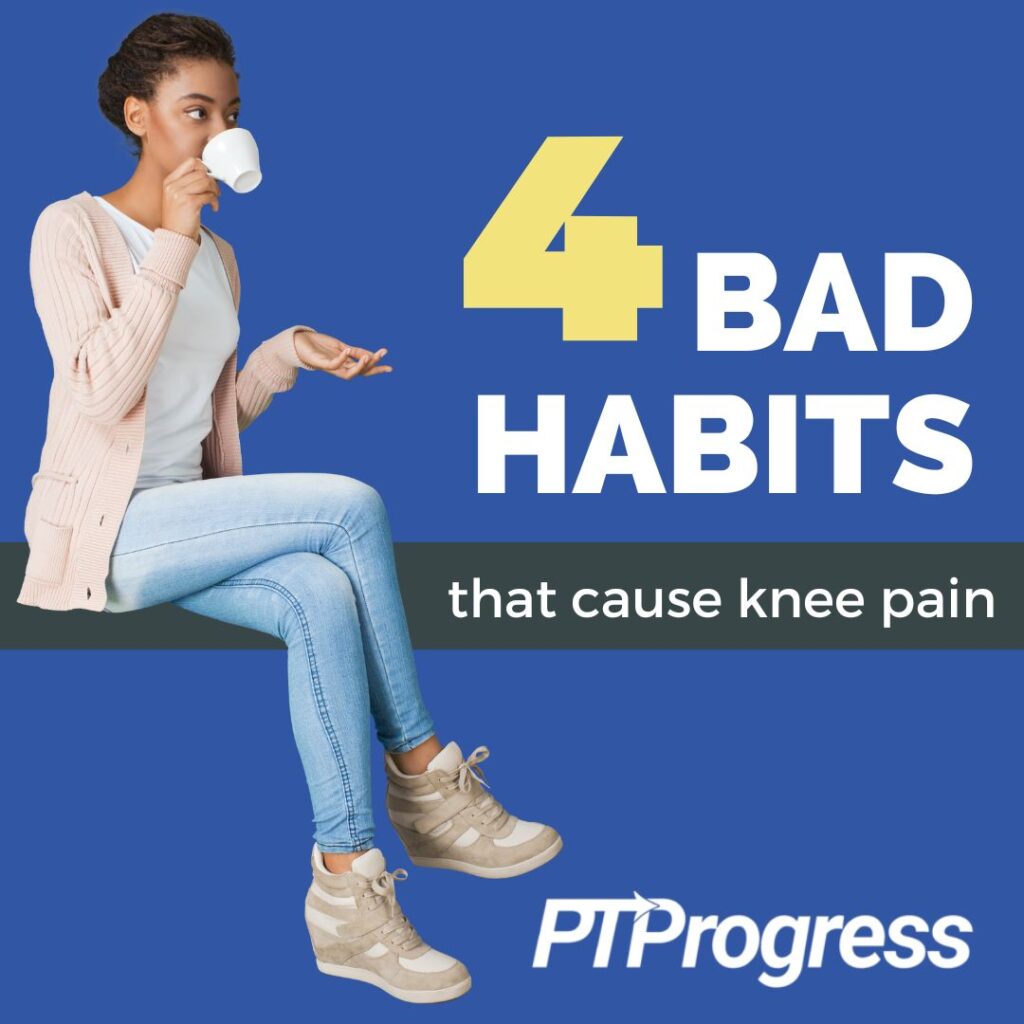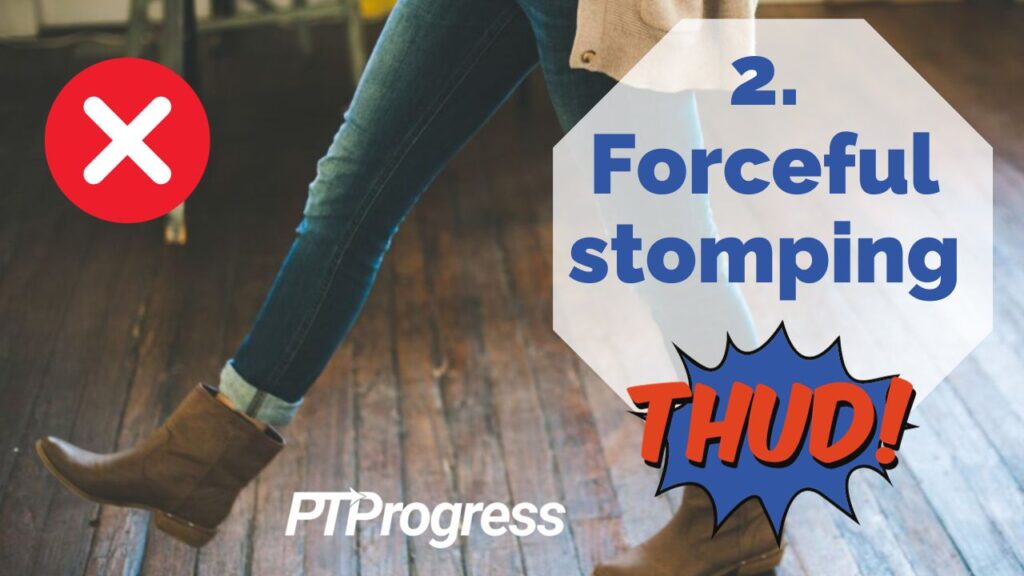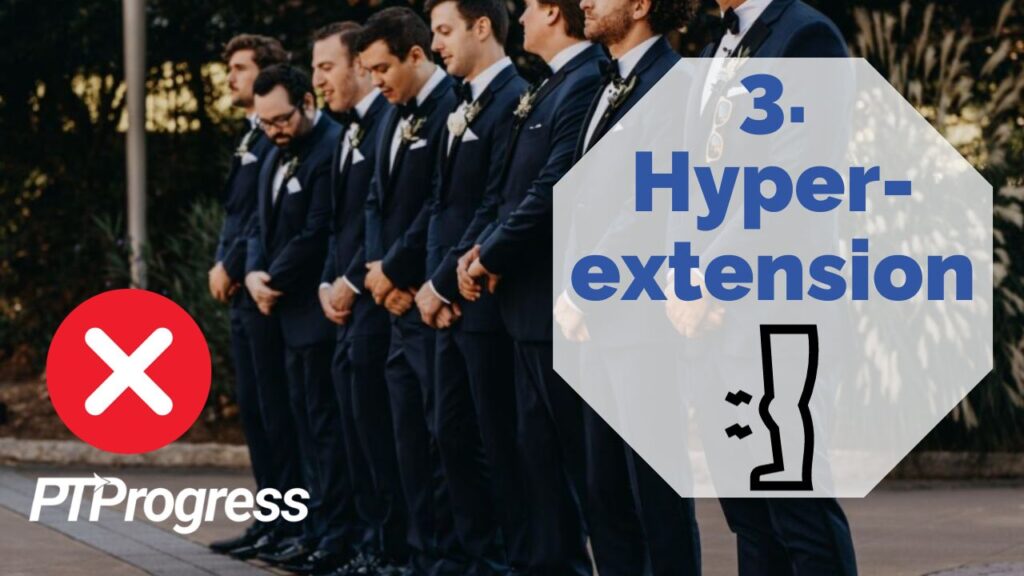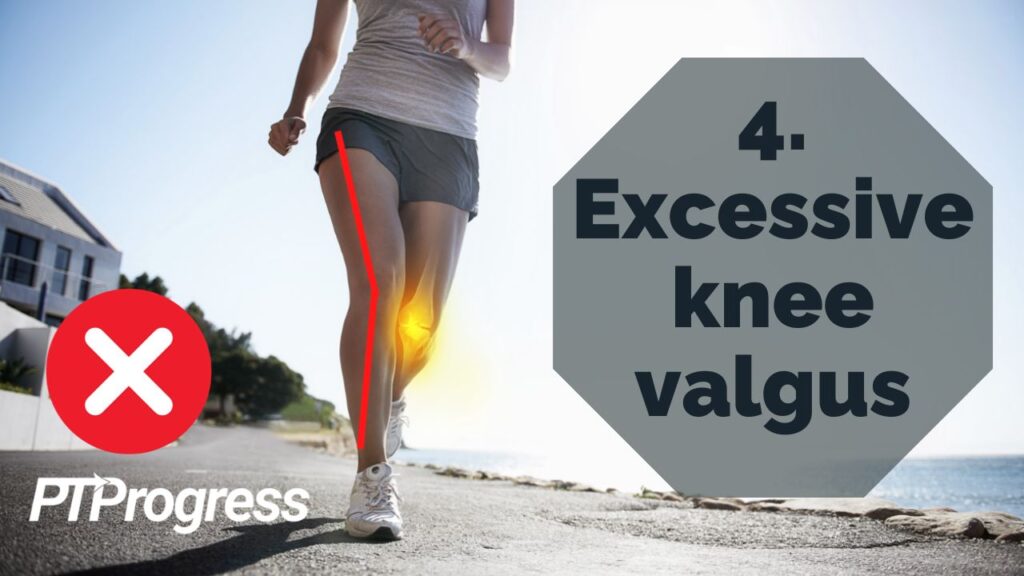
The knee is a remarkable joint, but it takes a lot of abuse. Pounding, jumping, bending, bowing—your knees bear it all. It’s no wonder knee pain is so common, prevalent in people of all ages or fitness levels. But the good news is that oftentimes, the causes of knee pain are just bad habits in gait and posture.
If you’re experiencing knee pain while walking, climbing stairs, or even after getting up from a chair, watch out for the following 4 bad habits that may be causing increased knee pain.
4 Common Causes of Knee Pain
1. Crossing Knees While Sitting
One bad habit many people have, myself included, is crossing their knees while sitting. But if you’re experiencing knee pain, this pernicious habit is absolutely worth trying to break.
Sitting with crossed legs adds torsion force to your knees beyond what they’d experience in a regular seated position. And extra torsion at the knee can irritate the tendons and ligaments that stabilize the knee when you move.
This bad habit can also contribute to any soreness and pain you may experience when you get up from a chair, especially after sitting for a long time with crossed legs.
Instead, try sitting with your legs at a 90º angle from the floor and repositioning or standing every 30 minutes. Not only will this promote increased blood flow, but it can also help you “reset” your posture at your desk.
2. Forceful Stepping

The knee endures a lot of pounding every day. If you keep a daily goal of walking 10,000 steps, realize that each knee will bear your body weight over 5,000 times in one day!
There’s nothing wrong with hitting those high-stepping milestones, but if you’re experiencing knee pain, you may be walking too hard on your heels. Excessive pounding at the knees can accumulate and cause increased irritation and inflammation in an already “angry” knee.
Without the complaints of downstairs neighbors, you may not realize you’re stomping around. So the next time you walk through your house, listen to your steps. Does each footfall resound in a forceful thud? Notice how much pressure you’re putting through your feet with every step. Can you walk a little softer?
Walking “softer” is one of the tips I give to patients with knee and hip pain because it helps them adjust their gait pattern naturally. Softening your footsteps requires you to gently move with a “heel-to-toe” motion instead of an abrasive thud.
Keep in mind that your heel-to-toe motion may feel much different when walking barefoot from walking with shoes on. So try it in both situations and be mindful of how much force your steps produce.
3. Hyperextending (standing and walking)

If you ever had to stand tall for a group photo, you might have heard the sage advice, “Don’t lock your knees!” Besides increasing your likelihood of fainting, standing with your knees “locked” or in hyperextension isn’t good for your knees (or posture, for that matter).
Hyperextending your knees simply means you’ve straightened your knees fully, and your leg may look like it’s “bending backwards” slightly. A hyperextended knee overloads its ligaments and tendons, while allowing muscles like your quadriceps and glutes to go on a vacation. This imbalance in pressure, when sustained for too long, can contribute to knee pain.
Instead of locking your knees, stand “with soft knees,” allowing a slight bend. You should also avoid “bouncing” your knees while standing, because this puts unnecessary tension on the back of your knees and could lead to further irritation.
4. Excessive Knee Valgus

Knee valgus is a medical term for an inward bowing of the knee. It’s used to describe the angle of the knee as the lower leg moves outward. Although a little valgus is normal, excessive knee valgus can put undue pressure on the lateral meniscus of the knee and may even increase your risk of developing arthritis in the future.
Identifying knee valgus can be tricky, but I encourage my patients to focus on 3 key movements: walking, running, and going up and down stairs. If your knee tends to collapse inward while climbing stairs, try to consciously bring your knee towards the midline so it remains in line with your first two toes.
I also recommend focusing on tightening the glute muscles as you stand and step. These important muscles in your hips and legs provide the lateral stability your knees require to fix that valgus movement.
Final Thoughts on Causes of Knee Pain
Changing a bad habit is always easier said than done, but that dose of prevention will be well worth it. After implementing a few changes in your sitting, standing, and walking habits, you may start to feel an improvement in your knee pain. Keep up the good work! You can double your efforts and prevent knee pain with strengthening exercises. Check out these 3 knee exercises to help improve your stability and increase your activity level with less pain.

